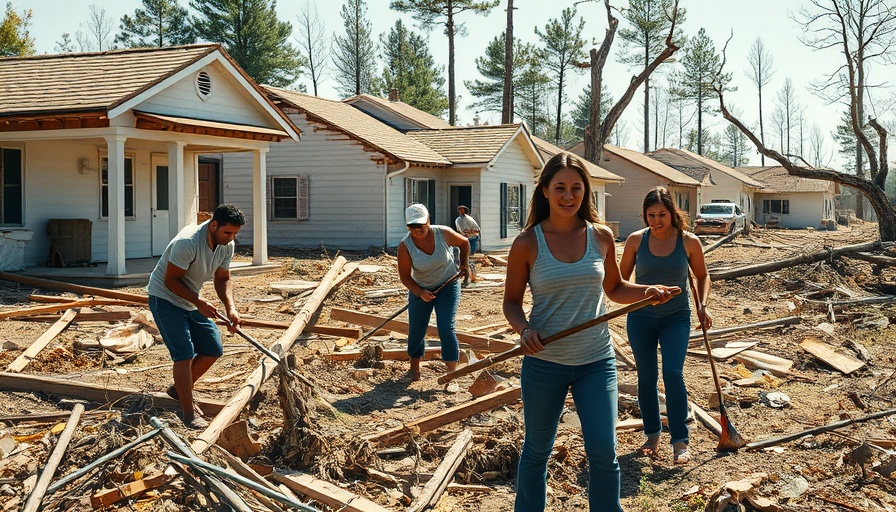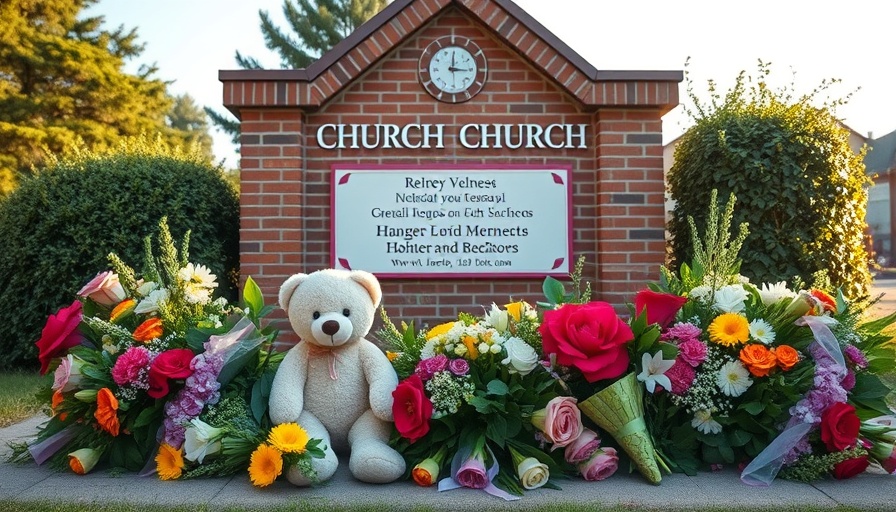
Storm Aftermath: A National Emergency Response Challenge
The aftermath of a recent deadly storm system threatening the southern United States serves as a grim reminder of the challenges posed by climate change and the inadequacies in national emergency response protocols. Over the weekend, multiple states witnessed devastating tornadoes, wildfires, and extreme winds, resulting in at least 37 fatalities. The sheer scale of destruction, spanning from Mississippi to Indiana, exacerbates concerns regarding America's preparedness to handle such catastrophic events.
The Storm's Devestation: Real-Life Accounts
Residents of heavily affected areas like Missouri and Oklahoma shared harrowing experiences as they surveyed the destruction left in the wake of the storm. In Missouri alone, 12 lives were lost. First responders were deployed to clear residential debris and restore essential services, while grieving families tried to salvage what they could. In Stillwater, Oklahoma, one resident recounted losing their home in the blazes fueled by hurricane-force winds. “We grabbed one of our cats and that was about it,” said Cheryl Rabet, capturing the emotional toll of these disasters.
FEMA's Response: A Growing Critique
A vital aspect of the recovery process revolves around the Federal Emergency Management Agency (FEMA) and its response capabilities. Criticism has mounted over perceived ineffectiveness, with many citizens pointing to administrative changes made under previous administrations, which have allegedly hindered FEMA's operational capabilities. There is a pressing need for reforms that enhance the agency's responsiveness to emergencies—an issue that rightfully captures bipartisan concern.
Preparedness and Climate Change: A Call to Action
Experts warn that climate change could likely increase the frequency and intensity of severe weather events, making it crucial for federal and local governments to take preemptive actions. Discussions on infrastructure improvements, enhanced forecasting technologies, and more significant funding for agencies like FEMA are imperative. Building resilient communities goes beyond mere recovery; it requires foresight and stringent preparation to prevent future tragedies.
Political Implications: Analyzing Voter Sentiment
The growing instances of extreme weather may not only affect lives but also influence the political landscape. As seen in the comments regarding the government’s ineffective responses, voter sentiment might shift during the next electoral cycle, focusing on candidates who advocate for proactive climate policies and robust emergency response mechanisms. Issues such as climate change and disaster preparedness may become pivotal in discussions leading to the next presidential election.
The Path Forward: Policy Recommendations for Recovery
Moving forward, a comprehensive approach must be adopted by Congress, involving aimed legislation that prioritizes climate resilience and disaster preparedness. Efforts to mitigate climate impacts can lead to grassroots activism influencing policy on municipal, state, and federal levels. Now is the time to foster bipartisan support to reform how America addresses and manages national disasters.
If there was ever a wake-up call regarding the urgent need for reform in disaster preparedness and response mechanisms, the recent storm events act as a highlighted reminder. The nation must rally to create structured frameworks that not only react to disasters but actively prevent them, making a concerted effort to innovate solutions for a safer future.
 Add Row
Add Row  Add
Add 




Write A Comment